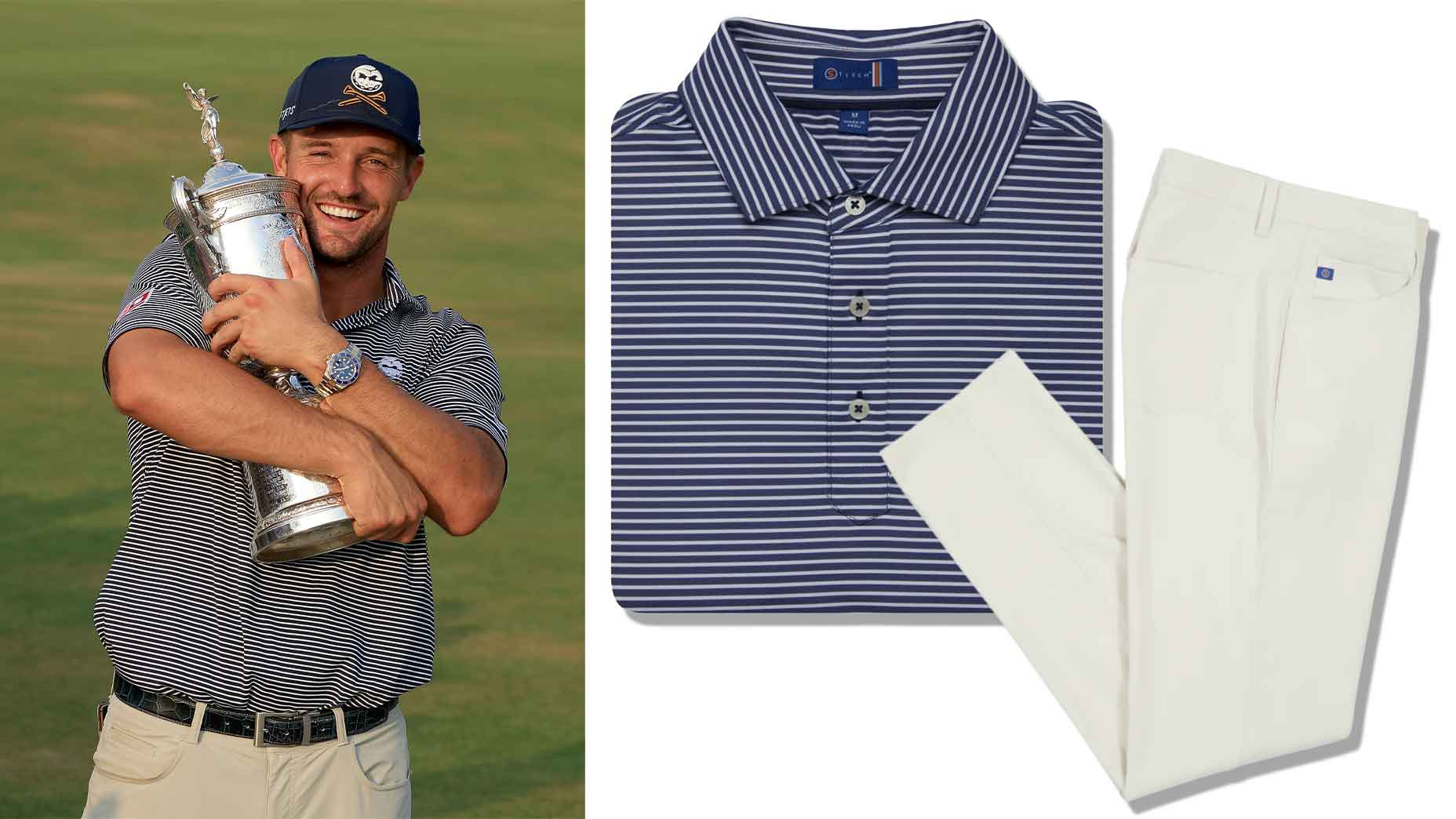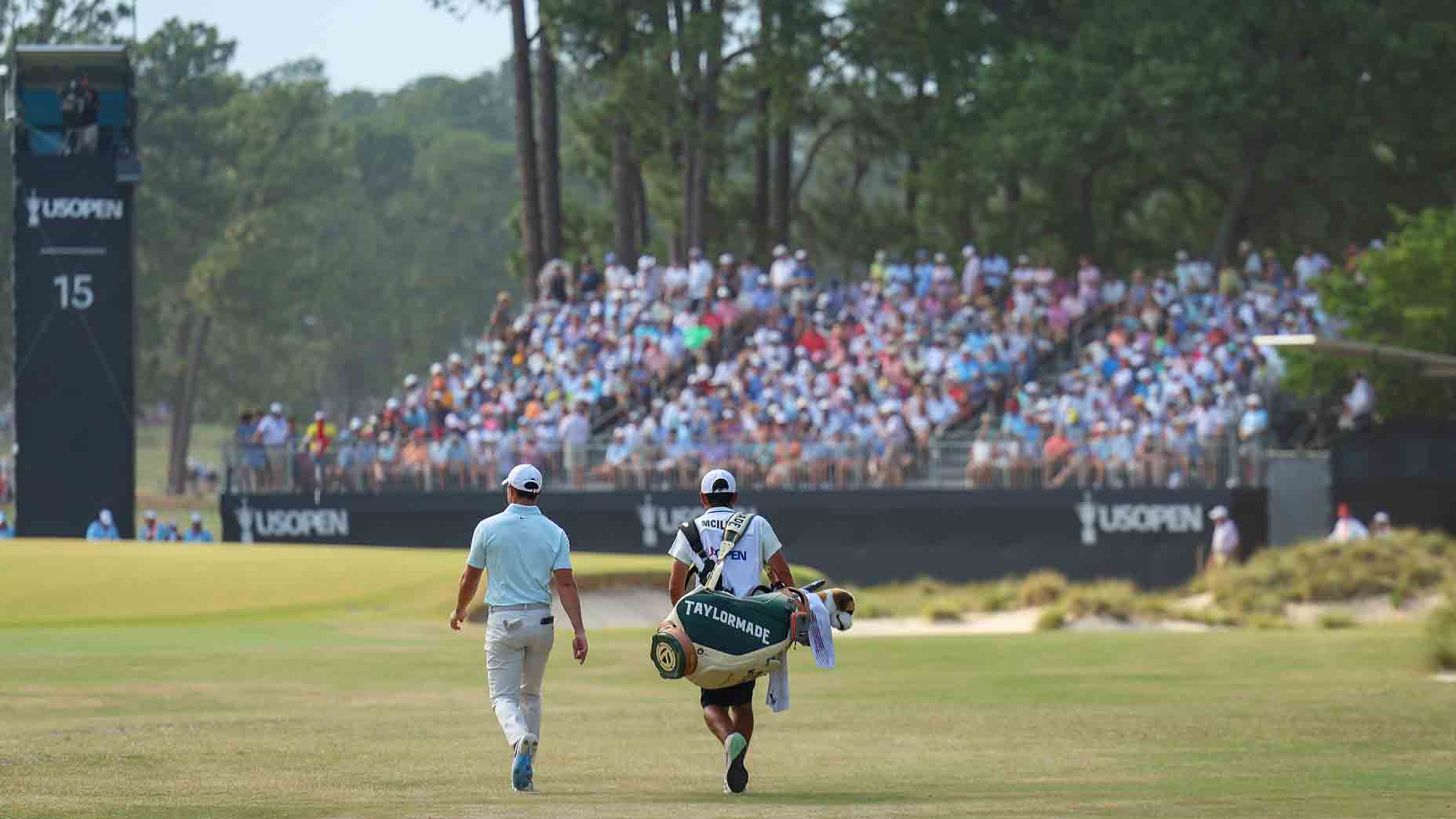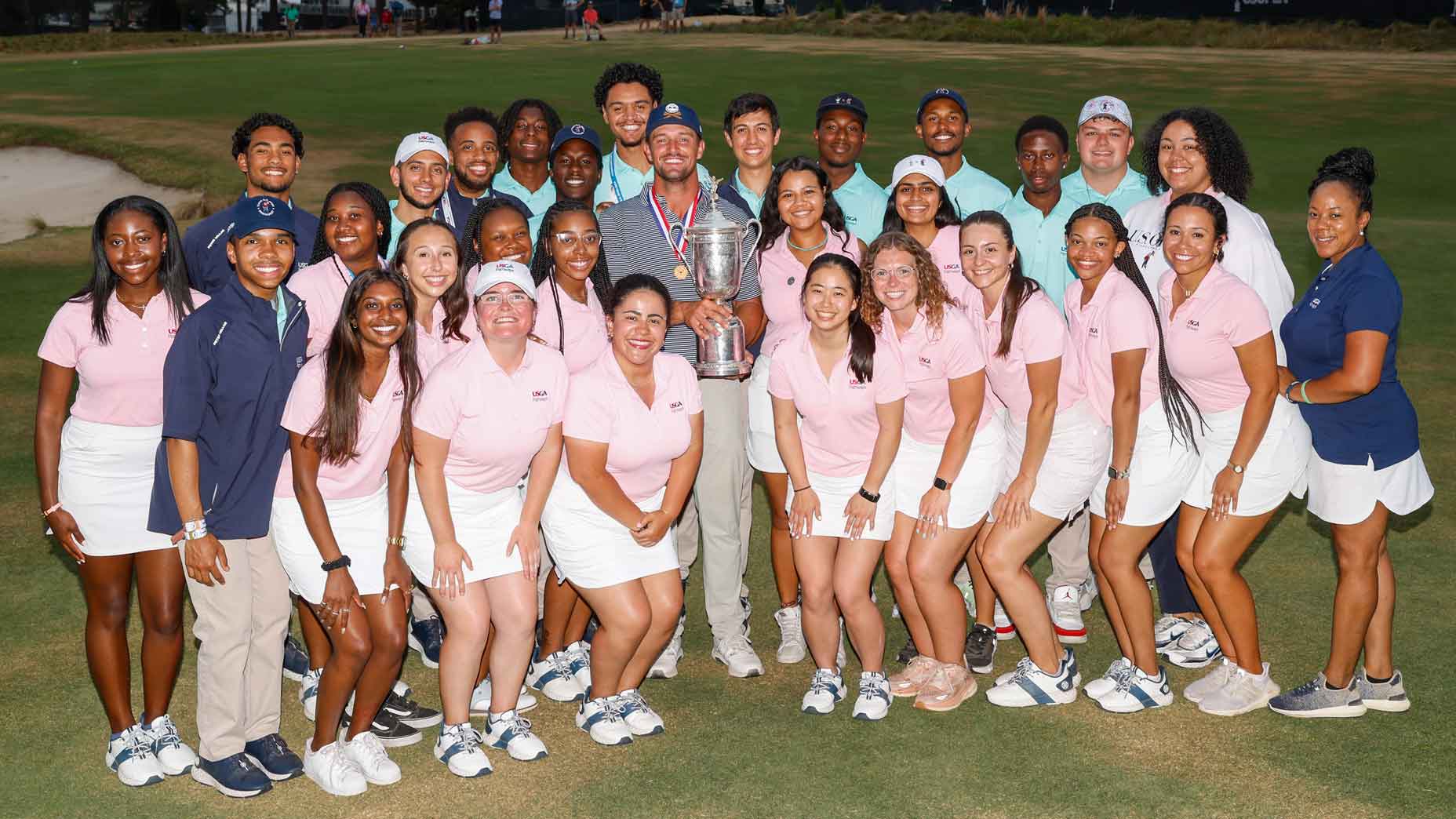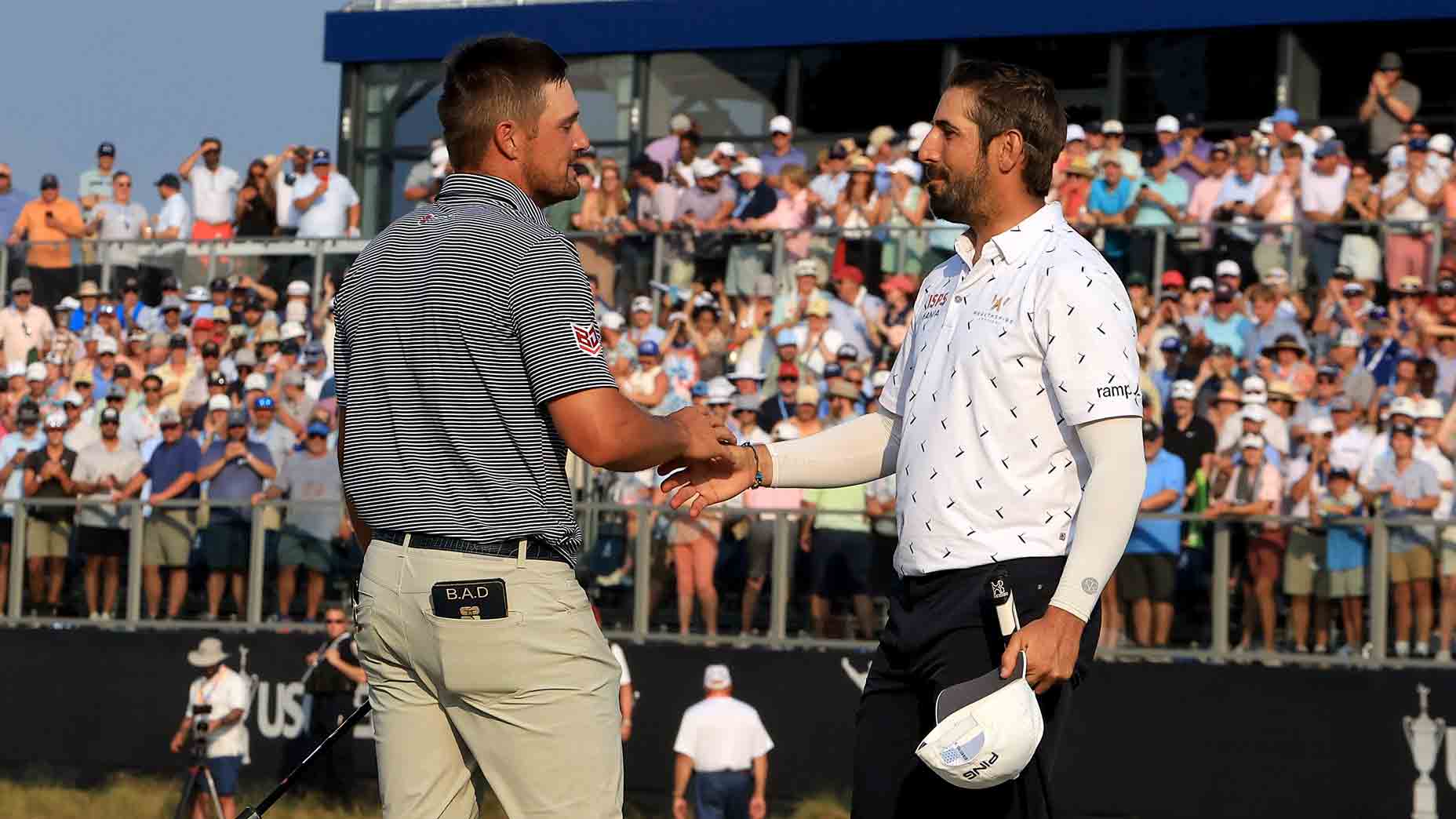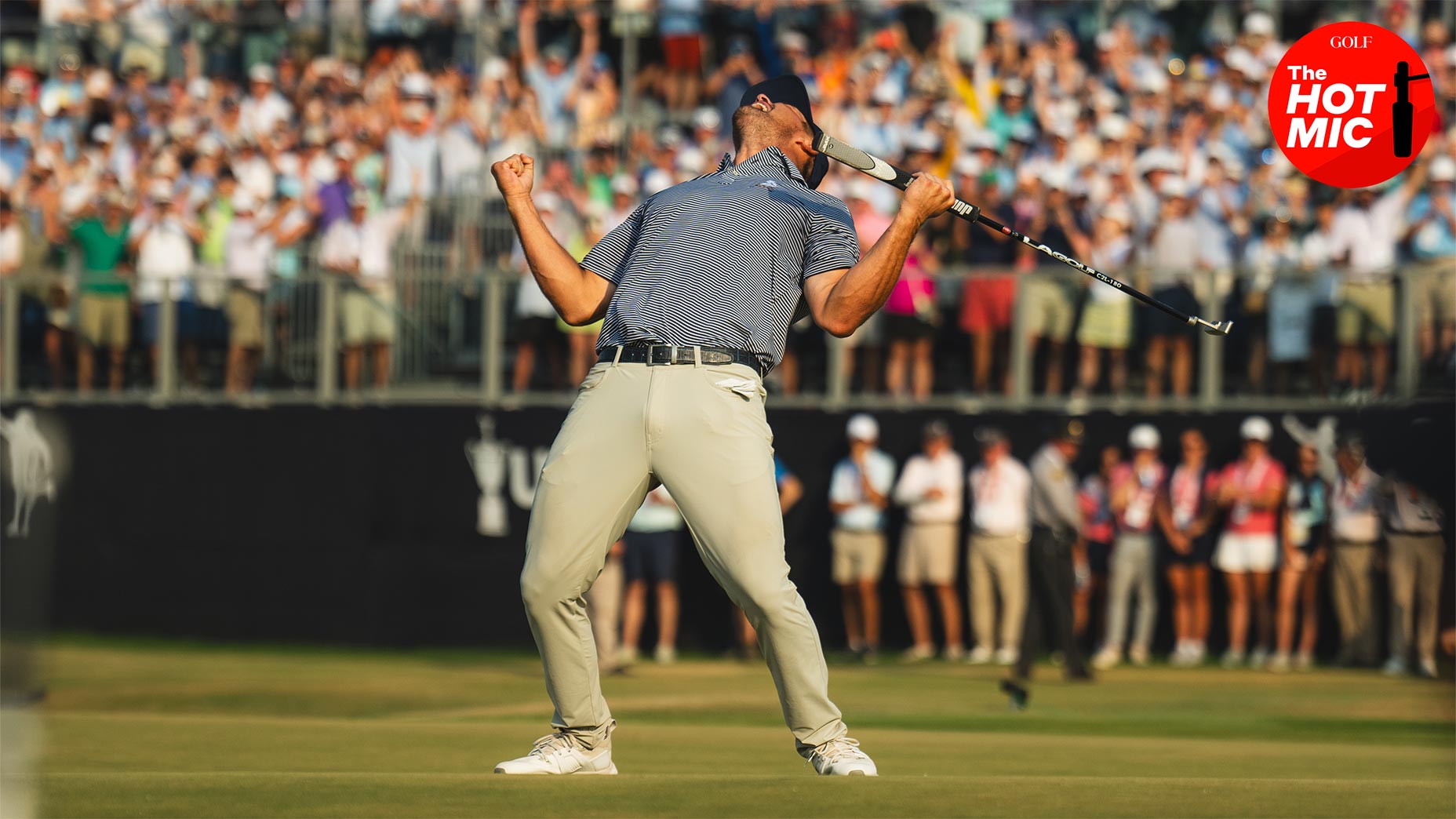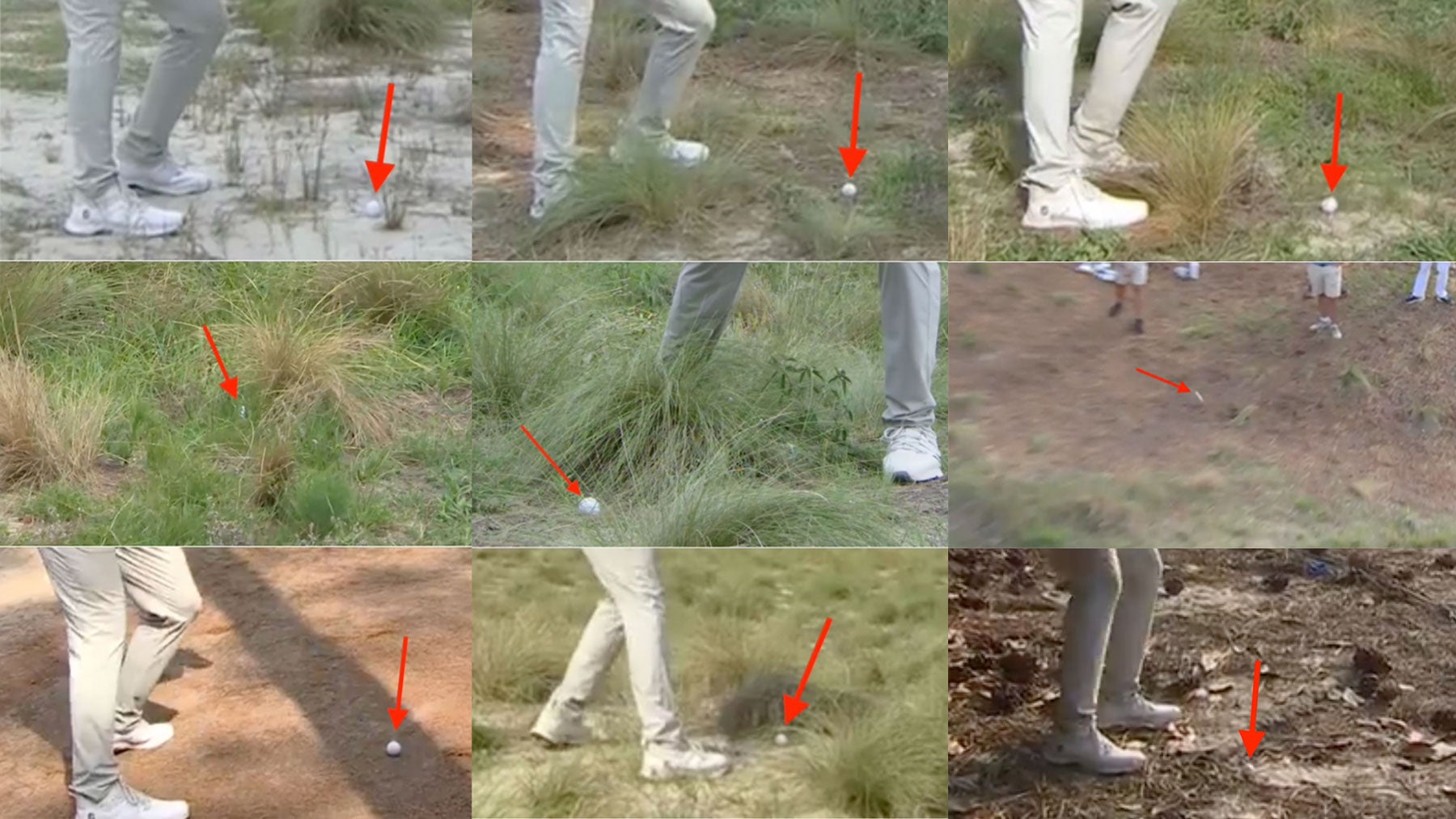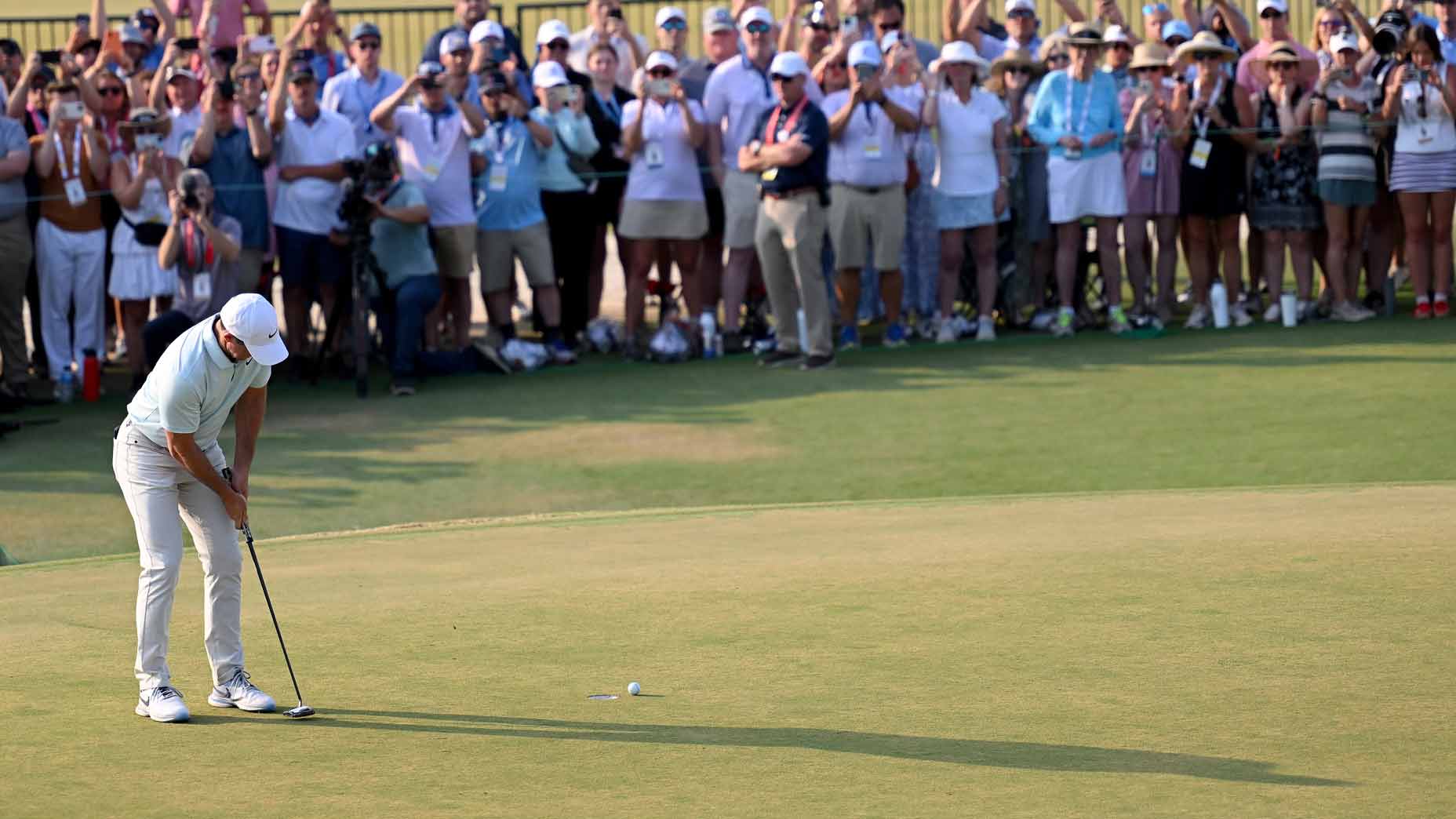If this U.S. Open feels sleepy, there are reasons for that

This viewing area behind the 18th green at the U.S. Open, pictured just after 6 p.m. Saturday, is designated for "clubhouse lawn guests."
Alan Bastable
LOS ANGELES — At 6:04 p.m. Saturday, the agent Mark Steinberg sat alone at a high-top table in a near-empty corporate suite directly behind the first tee at this 123rd U.S. Open. As he peered down at his phone, on a TV above him was NBC’s telecast of the third round, featuring the likes of Rickie Fowler and Rory McIlroy battling for the lead. Steiny looked like he could use some drinking buddies.
The suite looks out across the first tee and down to a roped-off area behind the 18th green that has been accessible this week only to “clubhouse lawn guests.” As Denny McCarthy and former U.S. Open champion Gary Woodland were finishing up their rounds — both shot three-over 73s to drop to one over for the championship — no more than two dozen spectators populated the viewing pen. To their left rose a grandstand, also available only to CLGs. As Woodland sized up his birdie try, it would be a generous estimate to say that the stand — midway through the third round of a major championship — was 10 percent occupied.
We knew from the jump that this Open would feel different. With “capacity limitations” on the hilly, 320-acre property here in the heart of Los Angeles — where on some holes players aiming lines aren’t trees but skyscrapers — the USGA made available only 22,000 tickets per round. From that allotment, only 9,000 were general-admission passes with the remaining 13,000 tickets going to LACC members and spectators and businesses that purchased access to the many private chalets, suites and pavilions around the course.
“We could’ve sold 40,000 tickets a day,” USGA chief Mike Whan said earlier in the week, “but we sold 22 [thousand] to make sure the experience here is still a quality experience for those that get on the golf course.”
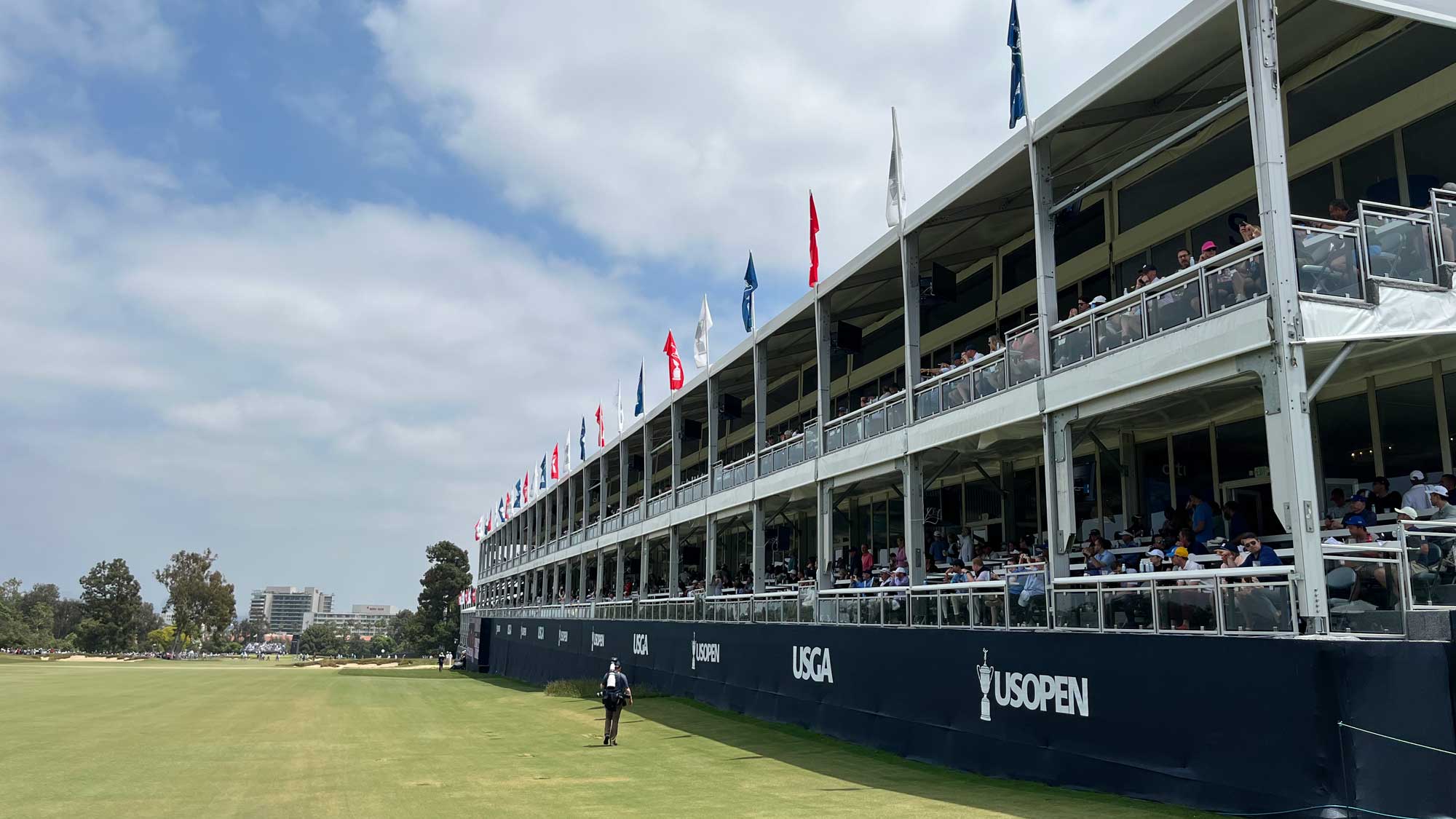
The result of what has been a smaller and undoubtedly more “corporate” crowd than has attended past Opens has not been lost on some of the players, including the defending champion. In an interview with Barstool Sports and Sports Illustrated on Saturday, Matt Fitzpatrick called the atmosphere at LACC “very poor.” He added: “From what I’ve heard a lot of members bought tickets and that’s why there’s so many less people. Hopefully, it’s not the same for other U.S. Opens going forward.”
It would be inaccurate to say that there haven’t been lively areas at which to spectate this week. The natural amphitheater around the 2nd green has been a popular viewing spot, as has been the hillside flanking the fairway on the exciting risk-reward 6th hole; the grandstand behind that green has also produced roars. (“If I was watching, that’s where I’d go stand,” Brooks Koepka said on Tuesday.) Crowds have also flocked to the grassy banks to the side of the green on the long par-3 11th.
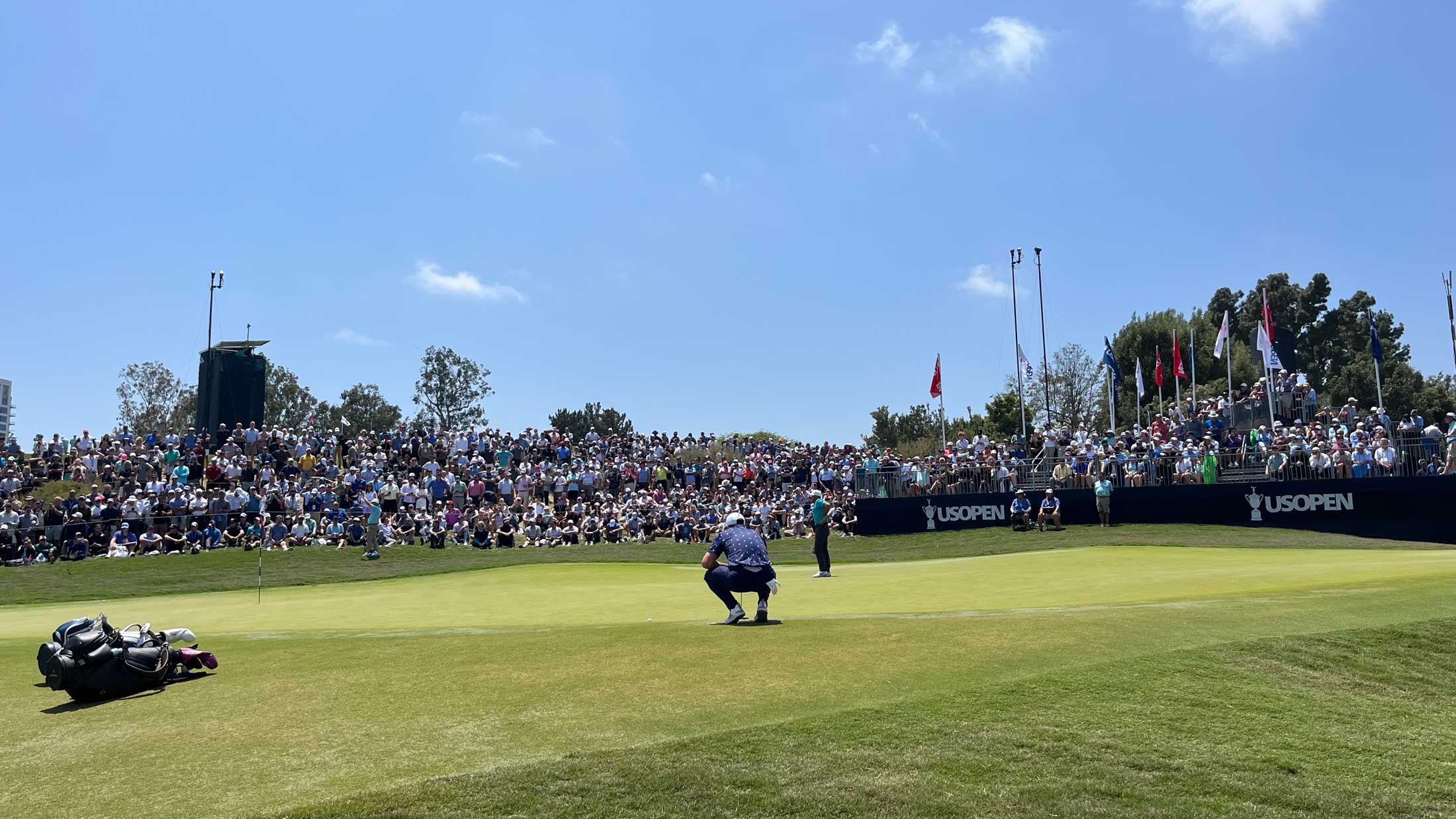
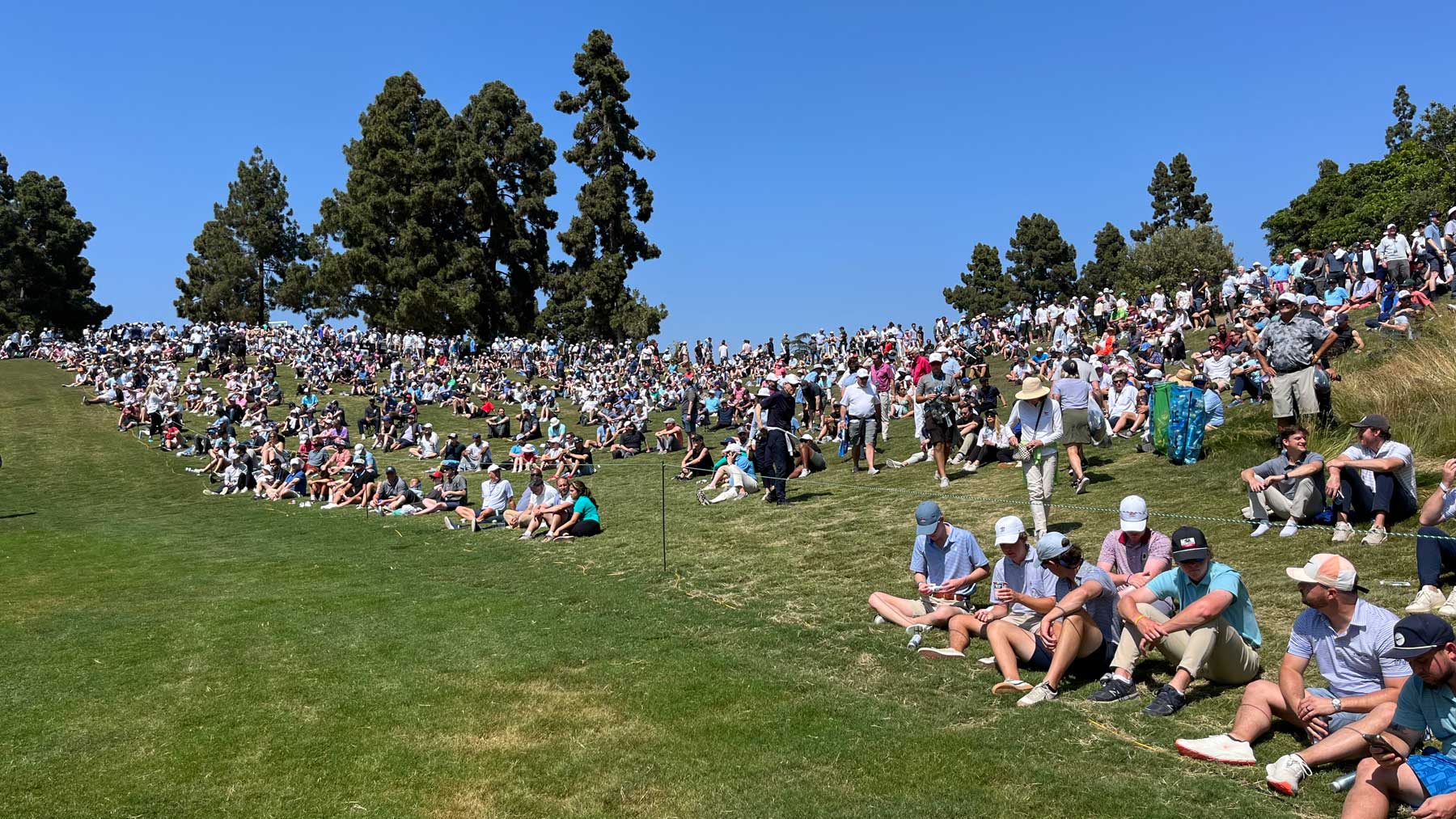
But other greens on the edge of the property — at 3 and 5, for example — are wholly inaccessible to fans. Ditto the 13th green and 14th tee. In those spots, this U.S. Open has felt more like a U.S. Mid-Amateur. “It’s kind of hard to explain, but it is a little quieter than usual,” Stewart Cink told me after the first round. “It could be because the property is very large and it’s kind of spreading people out. [Because] there’s also a lot of elevation changes and some of the crowds are down in hulls, you can’t really hear all the roars.”
But even in spots where there should be roars — or at least applause — the galleries have at times been reserved. On Saturday evening, as Nick Hardy and Romaine Langasque were putting the finishing touches on their third rounds, the quiet was unsettling. “We both had shots, like, within five feet of the hole and we got no claps,” Hardy said after the round. “And then we holed out, both made par and got no claps. It’s just kind of weird. It feels like Covid years.”

Max Homa, who is from L.A., likely had as much local support as anyone in the field this week. But when he approached the first tee — which abuts the clubhouse and has no grandstand around it — in his opening round, the scene wasn’t exactly electric. “You don’t have a lot of people around you on the first tee so it didn’t quite feel like a major,” he said. “I was still nervous, but it wasn’t quite as heightened as it was at Oak Hill a few weeks ago, [where] you walk over that bridge [to the first tee] and it’s a lot.”
McCarthy, after his third round, called the atmosphere “a little more dull than usual,” in part due to the nature of the sloping topography and old-timey design. “It’s a really hard spectators’ course,” he said. “I’ve got my fiancée, my dad and some other family and friends walking, and they were just talking about how they just get cut off and can’t really see much, and they have a lot of dead ends where you’re 150 yards away and can’t really see.”
He added, “I would like to see more people out here, but that’s not my decision. I’m just here to play golf.”
His playing partner, Woodland, said the energy this week actually has been “pretty good” but challenged by the fact that “nobody can get too close to the greens. My family was out there walking, but it was hard to see them because they’re so far away, and their walk is harder than our walk.”
It should also be noted that this U.S. Open is happening in a sprawling metropolis with a population of nearly 4 million. That means that golf — even a tournament of this scale — isn’t squarely on everyone’s radar. This weekend alone in the L.A. area you can attend the Pasadena Chalk Festival, a car show on Rodeo Drive or a jazz festival at the Hollywood Bowl. A last-minute offer for U.S. Open tickets? Maybe you’d take it, maybe not.
“It’s maybe the L.A.-New York phenomenon,” Cink said. “Because when we play in those cities, it seems like our golf tournaments are always a little quieter and little less in the forefront and more in the backdrop of everything there is to do in those cities.”
At the risk of generalizing, L.A. fans also lean more easygoing than, say, their East Coast counterparts. That’s not us saying that — it’s the hometown kid, Homa.
“The crowds are great or hefty in certain areas,” he said earlier in the week of the LACC galleries. “But we’re also coming last year from Boston [The Country Club], where they’re just louder there. Their decibel is just higher than ours is out here.” Of the morning-wave atmosphere at LACC, he said, “People don’t wake up quite as early, I guess, to get going. So I imagine by the afternoons and especially the weekend it will get nice and rowdy.”
Rowdy? We’re still waiting for that.


